Hey guys, I know it’s been a good little while since my last entry for this blog space but there’s been so much happening in my bonsai life and personal life. The bonsai nursery feels like it has doubled in size and demand now that we have a fully functional greenhouse on site. All the propagation we worked on for the previous year is starting to really pay off and we have plants that have gone from pinky size to well past thumb size now. The responsibilities of the nursery is the one thing that has doubled as well, that can’t really be seen but it’s add time and stress. Honestly, I don’t mind at all. Being overwhelmed with bonsai projects is the best type of “stress”.
Also, the podcast has taken priority when it comes to information sharing and getting the word out. Mike Lane, Carmen Leskoviansky, and I have been working hard on making the podcast a great learning platform for beginners new and fresh to bonsai. The one things that Little Things for Bonsai People, our podcast show, can’t do though is show picture examples of trees in development. The podcast will always be a companion to the content we share as far as video and pictures.
So, I’ll share a recent experience and tree styling session I’ve had just recently. I had the pleasure of interviewing Guy Guidry on the podcast show late 2023 and I asked him later on if he would be interested in helping me with some tree designs moving forward. He was totally game so I decided that the first big project to tackle would be literal big podocarpus. Guy is known for big bonsai so this tree is right up his alley.
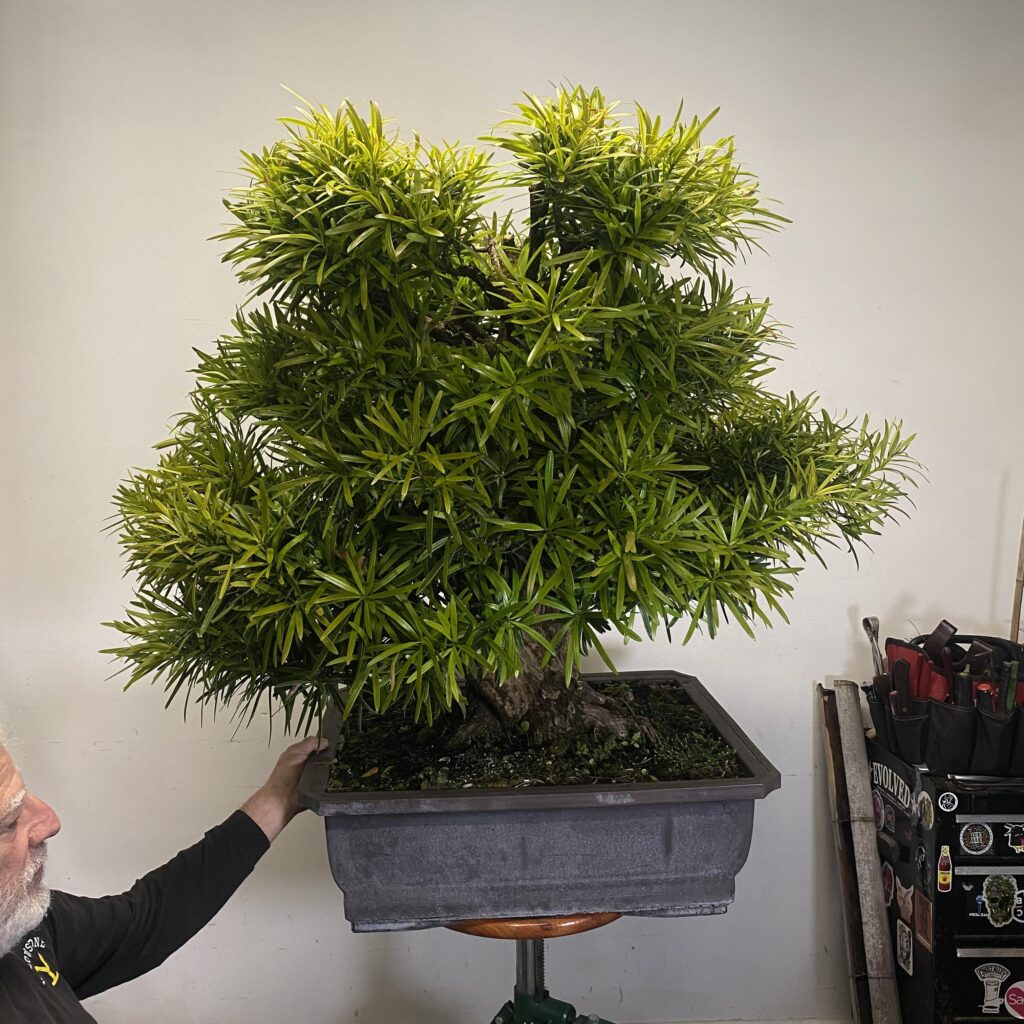
This is a sizable Podocarpus macrophyllus, or “Buddhist Pine” as they are commonly called here in the southeast United States. They are an even more common landscape shrub grown here in Louisiana. They are a great barrier plant for privacy fencing or just making a big green wall for accenting your garden. They can grow to heights up to 30-40 feet with a completely filled in and dense canopy. For potential bonsai material they are a little more challenging.
The Buddhist pine is quite hardy and can take pretty rough cut backs. This particular tree was collected in an urban landscape by Eric Wigert in south Florida. It was one of a handful of other larger podocarpus he had available. After inspecting the inter workings of the tree, I selected it to be one of my next big projects.
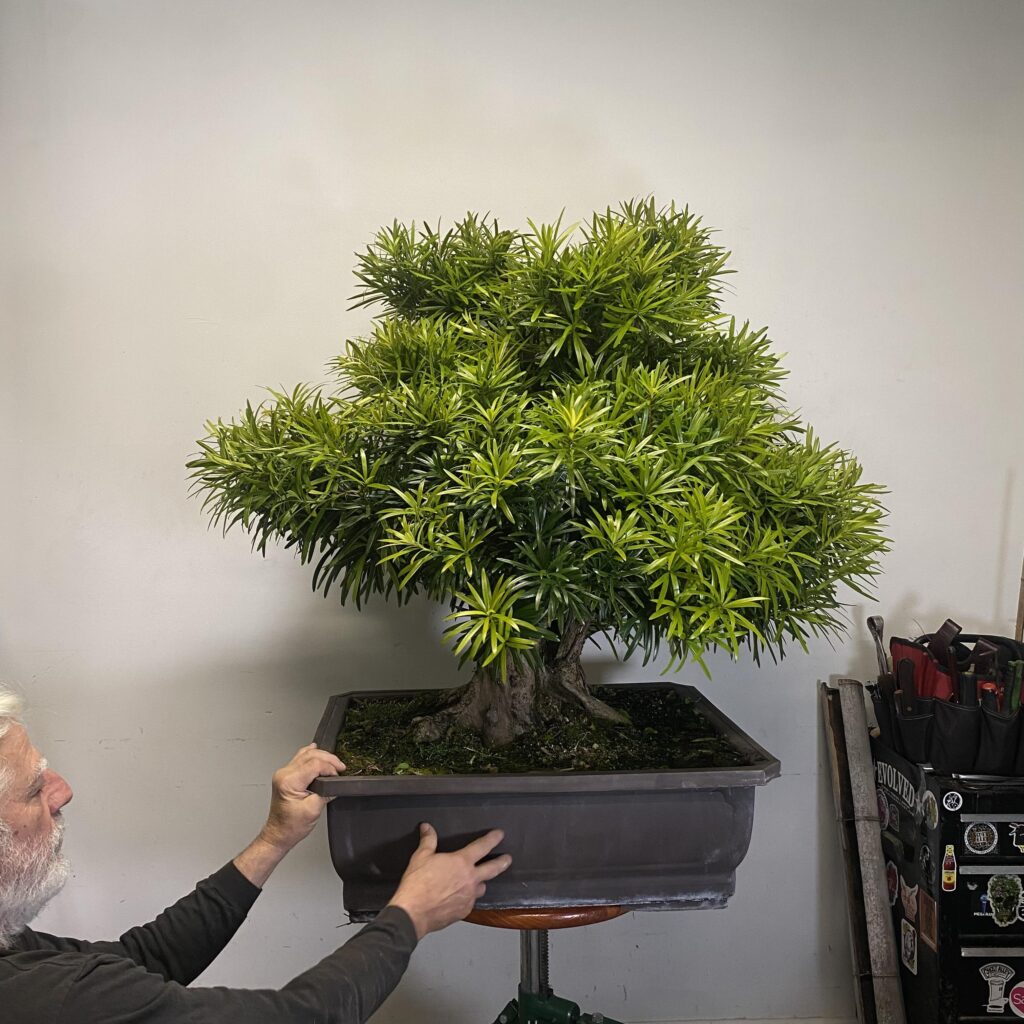
The previous photo was the “front” of the tree and this photo is just the “back”. Guy and I made sure not to be married to either side to prevent us from choosing the best possible front and angle for this beast.
If you look closely at the base you can see how much potential is waiting underneath the robust canopy of this thing. Guy wanted to start selecting branches to remove first that will not contribute to a good design. They have been mudding up our view of the tree thus far.
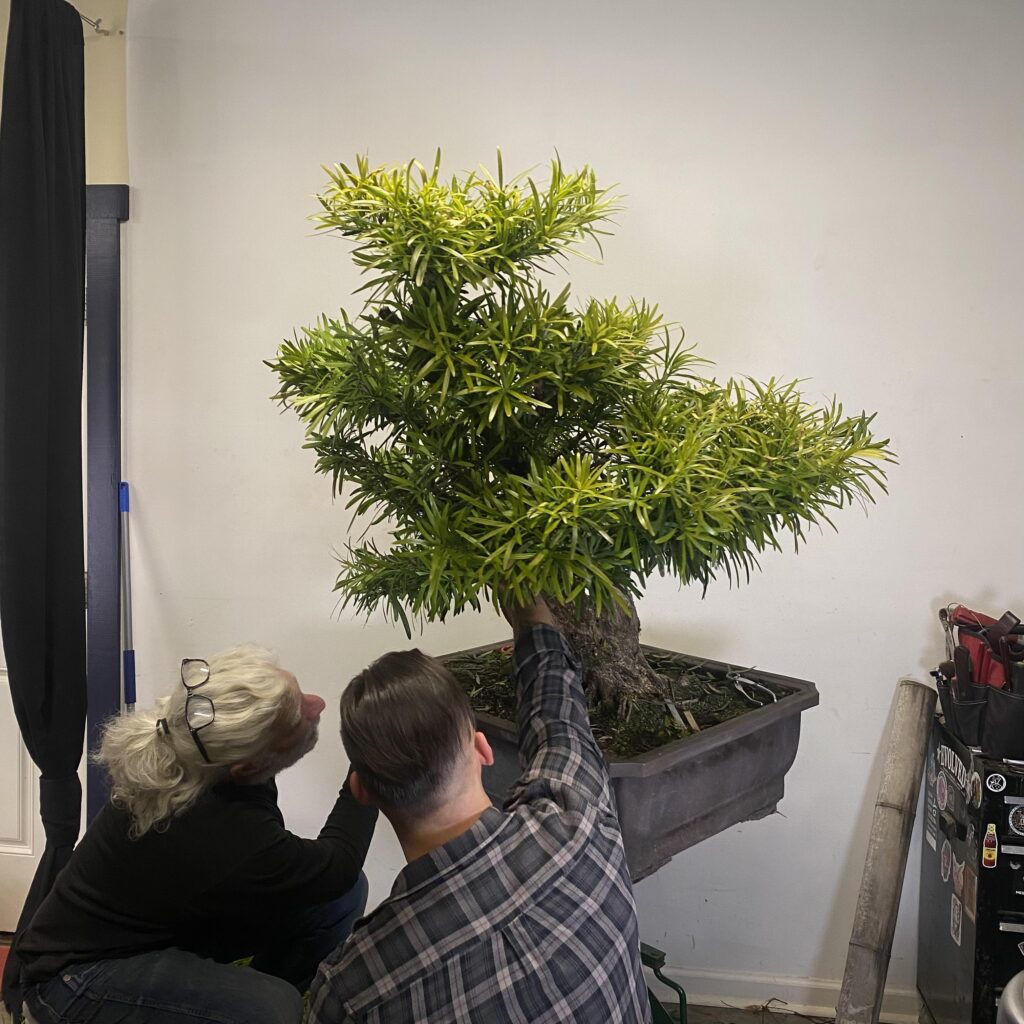
Guy and I debating on which of the taller trunks are worth keeping and which is worth carving down to be a compliment to the other. You can see some minor trimming has been done to the tree just to maintain it before we made the big moves.
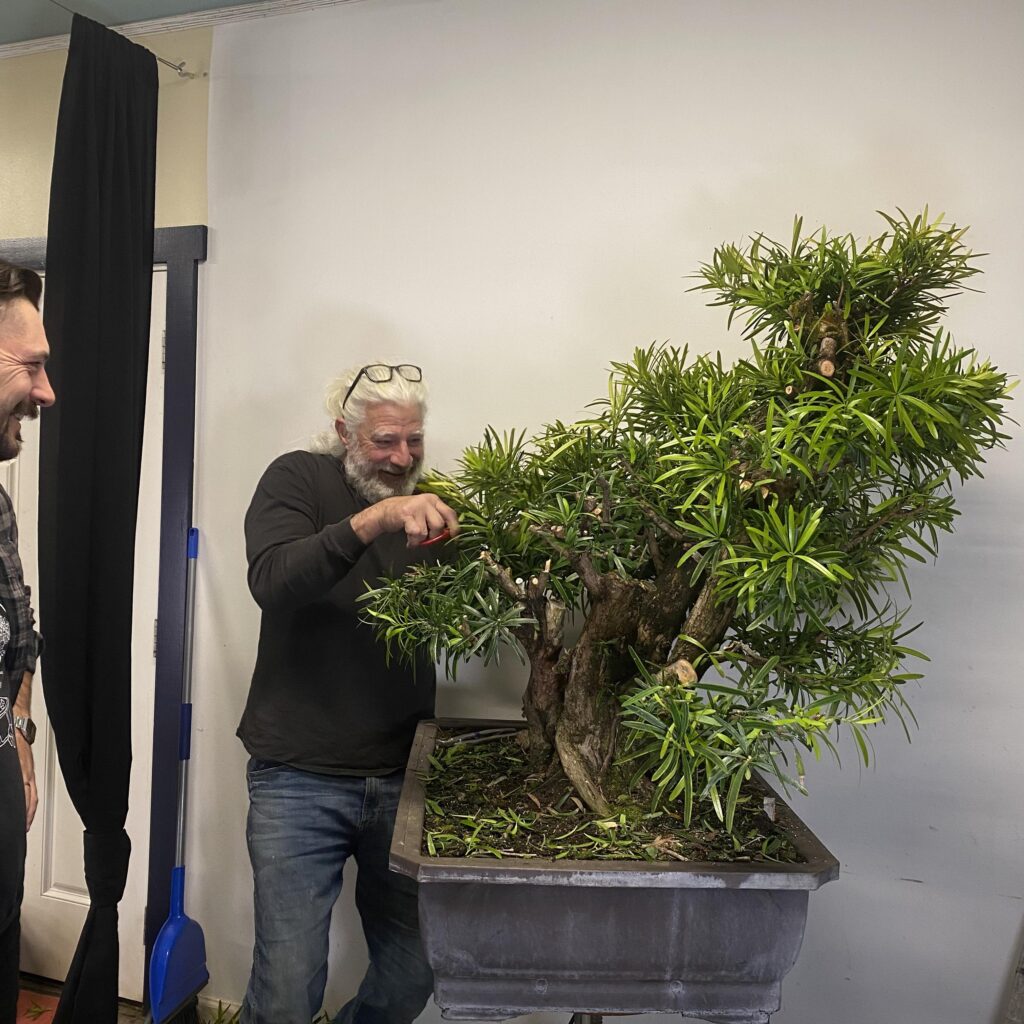
One of the best parts of working on this tree with Guy is being able to reconnect with him. He’s a living legend in his own right and it was an honor to work our way through this large piece of material together. He’s a big personality as well, so there was plenty of laughs to be had here. Guy is a nonstop talkative flow of thoughts and incite on how to work and care for plants and bonsai.
Guy is thinning the leaves here so he can slowly “chisel” his way into the tree to see where a good line would lie. The line is the more important aspect of the tree to get right the first time in. It will be the scaffolding to lay the bones of the tree upon.
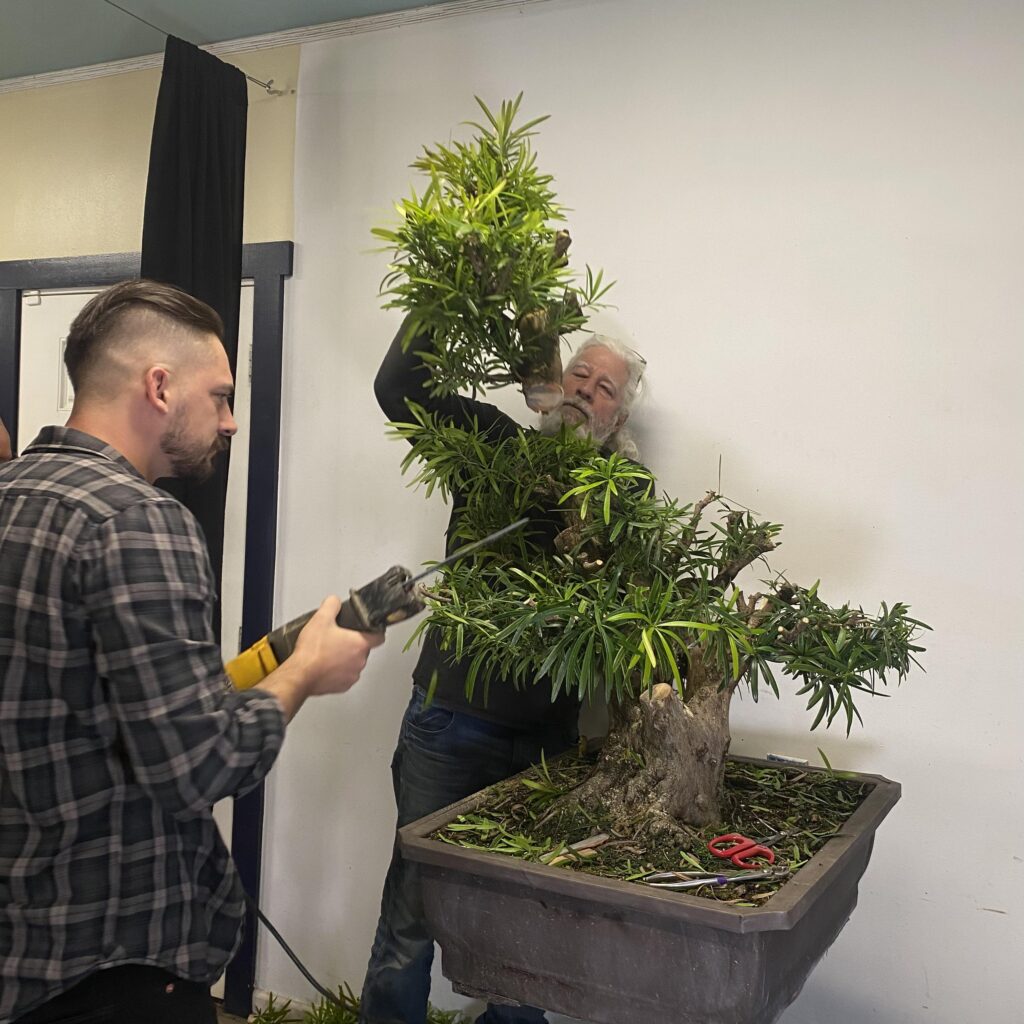
After what could have been an hour or so, we came to a conclusion on which long straight trunk needed to be reduced first. Decisions like this are hard to describe unless you are there in the moment. There was multiple times where either me or Guy would grab the reciprocating saw and then say “wait a minute, maybe we need to rethink this again.”
Cutting off large pieces of the tree like this is a big decision because it took many years for that tree to grow that trunk to that size. Hard to describe it without use the word “that” THAT many times.
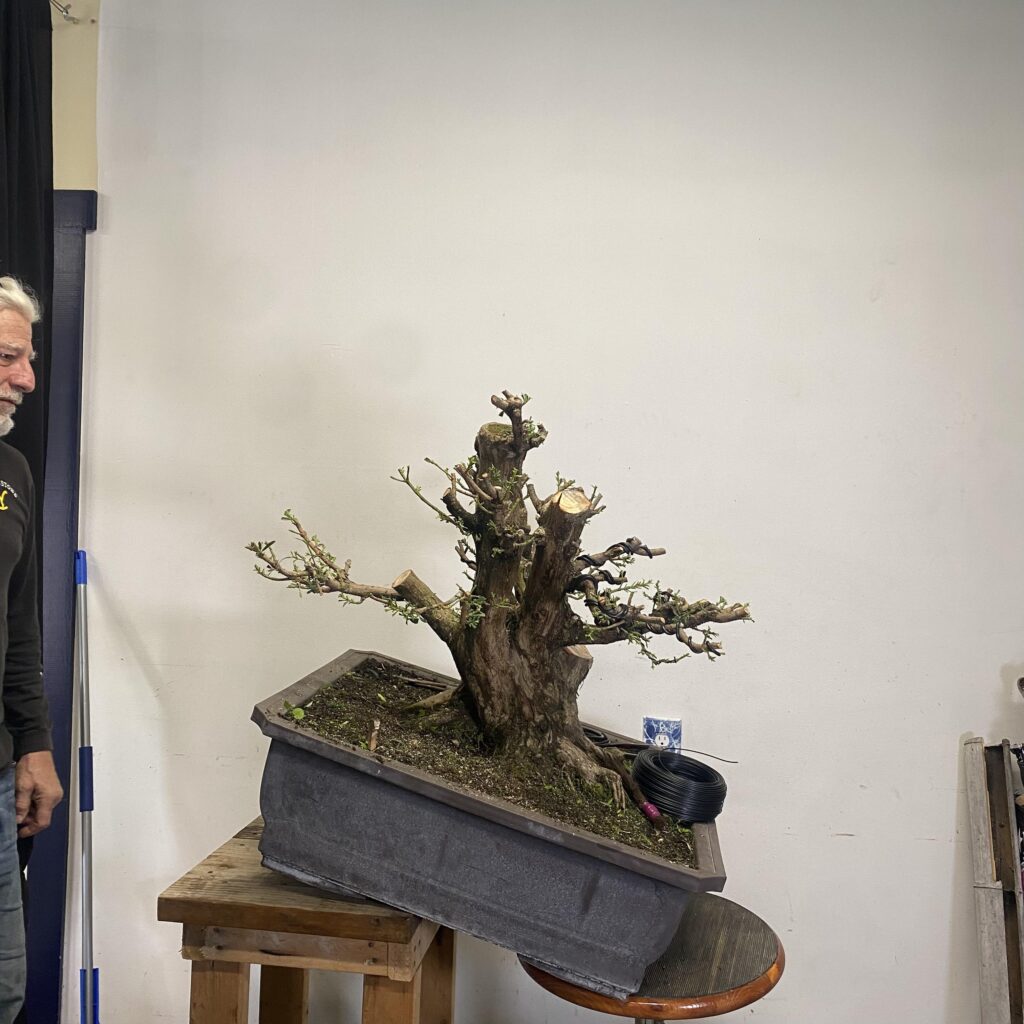
After the removal of a few other large pieces that where way out of the scope of what size we were working towards, we removed all of the leaves. The large trunk chop can be seen clearly now as well as another long straight piece that was on the left side of the tree. Guy and I were still debating if the branch on the left was still necessary but it ended feeling a little too far away from the central base of the tree and too young.
The angle was changed quite nicely as well. This angle will also bring out the beautiful line that was hidden under the leaves before.
I know a big question after seeing this done to this podocarpus will be ‘is it okay to completely defoliate this species?’ The answer is yes, it is totally fine because this tree was very healthy before the cut back and defoliation. This species of podocarpus is also very vigorous and will return with even smaller and nice leaves in the future. Guy suggested we only use fish emulsion as the tree is in a very high nutrient pine bark mixture potting soil for now. This will help keep the leaves small and the shoots metered back so that the tree doesn’t get too apecially dominant and cause unnecessary die back in the weaker parts of the treee.
This podocarpus is showing sign of back budding on old wood as well. There are a few spots we wouldn’t mind growing new branches on either.
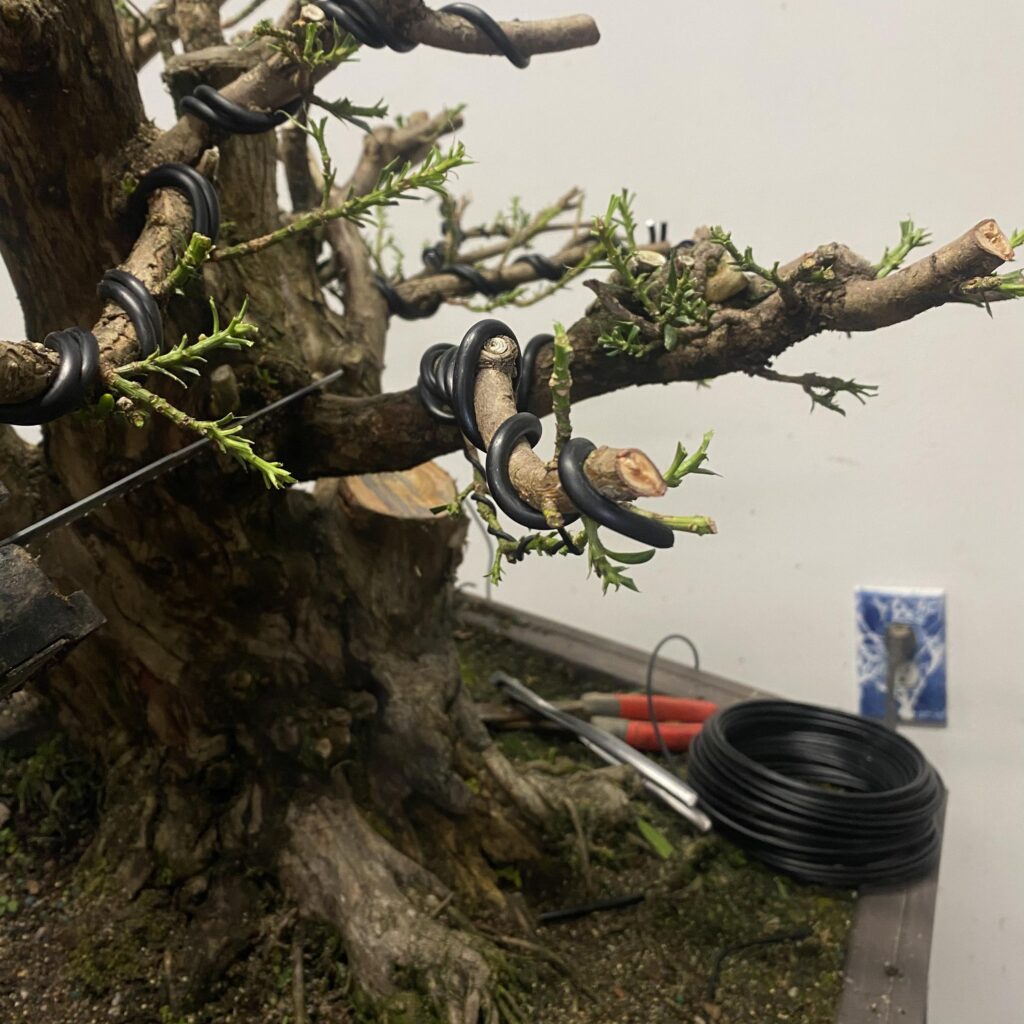
After setting the new angle we decided that the biggest and nicest branch to the right would make a good first branch in our design. Problem is though is that it’s way too thick to bend or move with conventional means. As seen here, the branch above it is blocking its view.
Guy is known for being able to make big branches move and he has a few tricks up his sleeve.
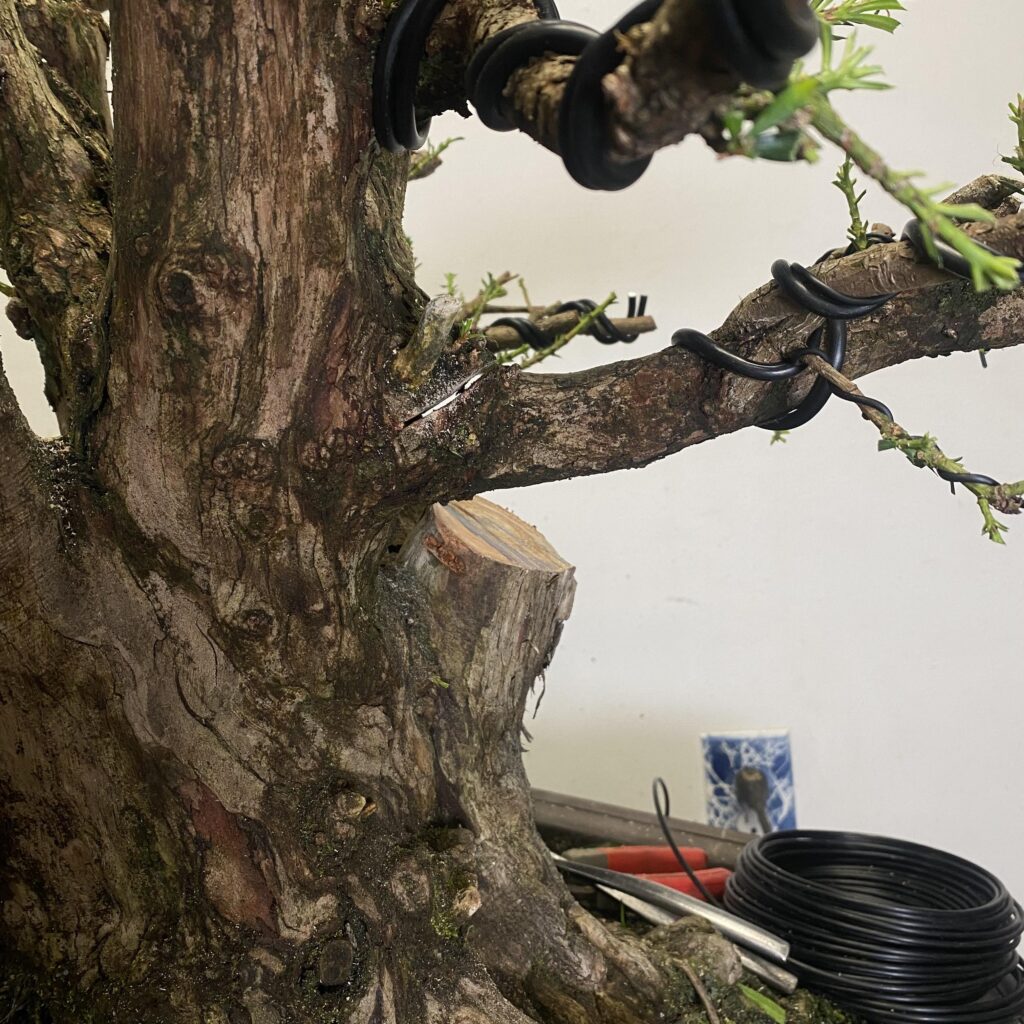
Guy suggested we remove a silver of wood so we can create a easier flexing point in the base of the large branch. From here we don’t have to break the branch in an attempt to move it lower. The branch already has a fair amount of movement and good starting points for budding. Just need to get it to move about 15 degrees downward.
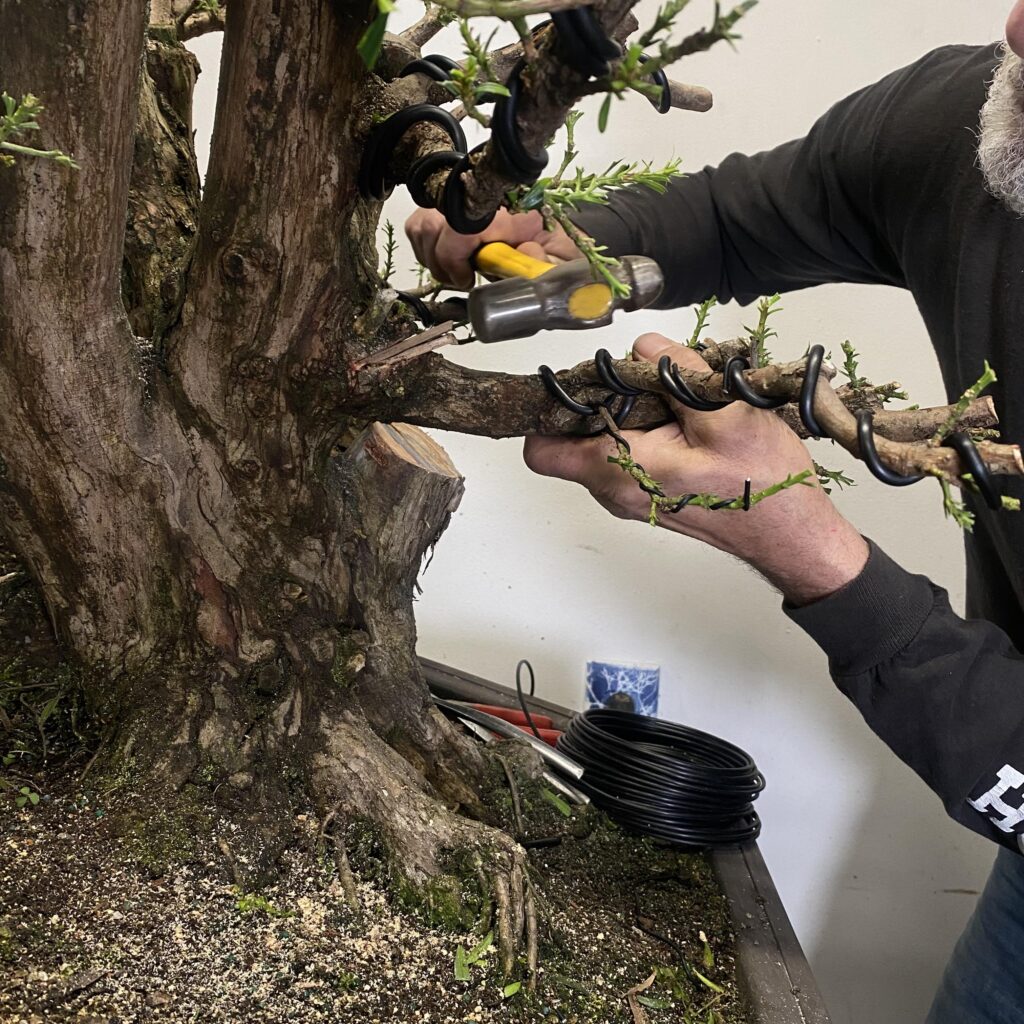
Using something similar to shims, we hammered in pieces of bamboo to move the branch with ease. We want to cause as little damage and tearing as we moved it. Podocarpus are very capable of healing and callusing over so this cut and bend will go away in the years to come. In 5 years it will be set and look more natural and in 10 years you wouldn’t even know we preformed the work at this site.
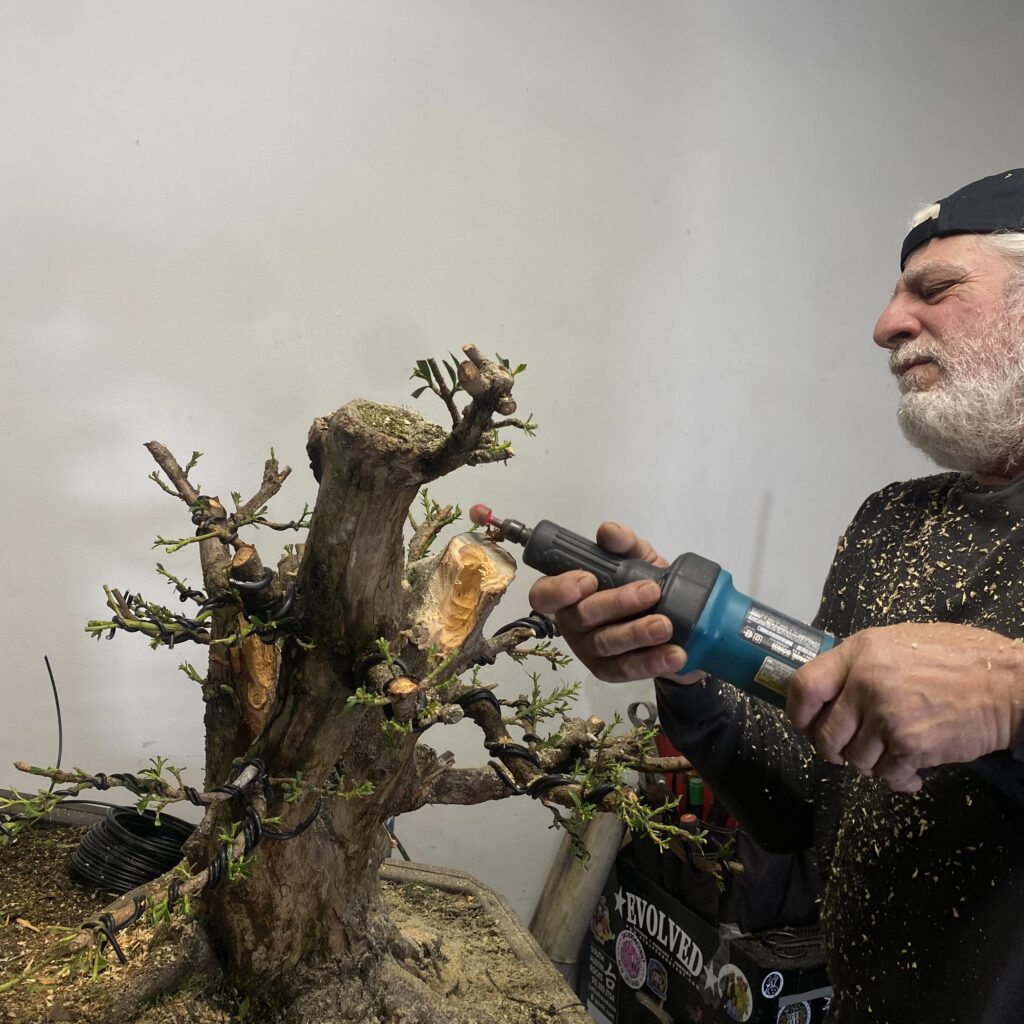
The other large branch on the left side was removed and then we got to the carving on the straight trunks and branches. Each branch that was flexible enough to be better placed was wired. And now for the big reveal.
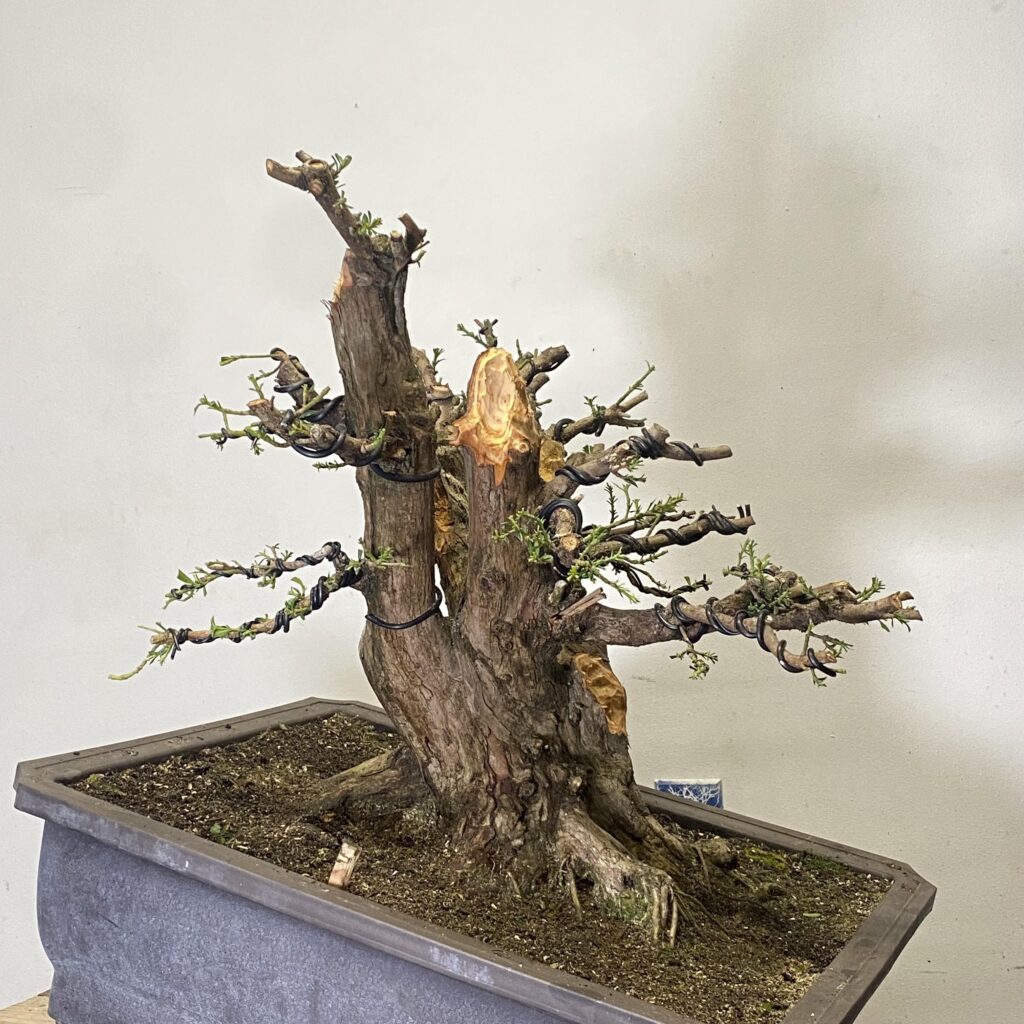
We took off a good bit but the tree looks much bigger because we honed in on the proportions to get that lovely taper throughout the rest of the bulky trunk. We were able to set a nice first branch, second branch, and even a great back branch on this tree. Now it’s time for recovery for this tree. It will ride out the rest of the late winter in our greenhouse and will not be allowed to drop below 50 degrees. The leaves will more then likely return in a month’s time.
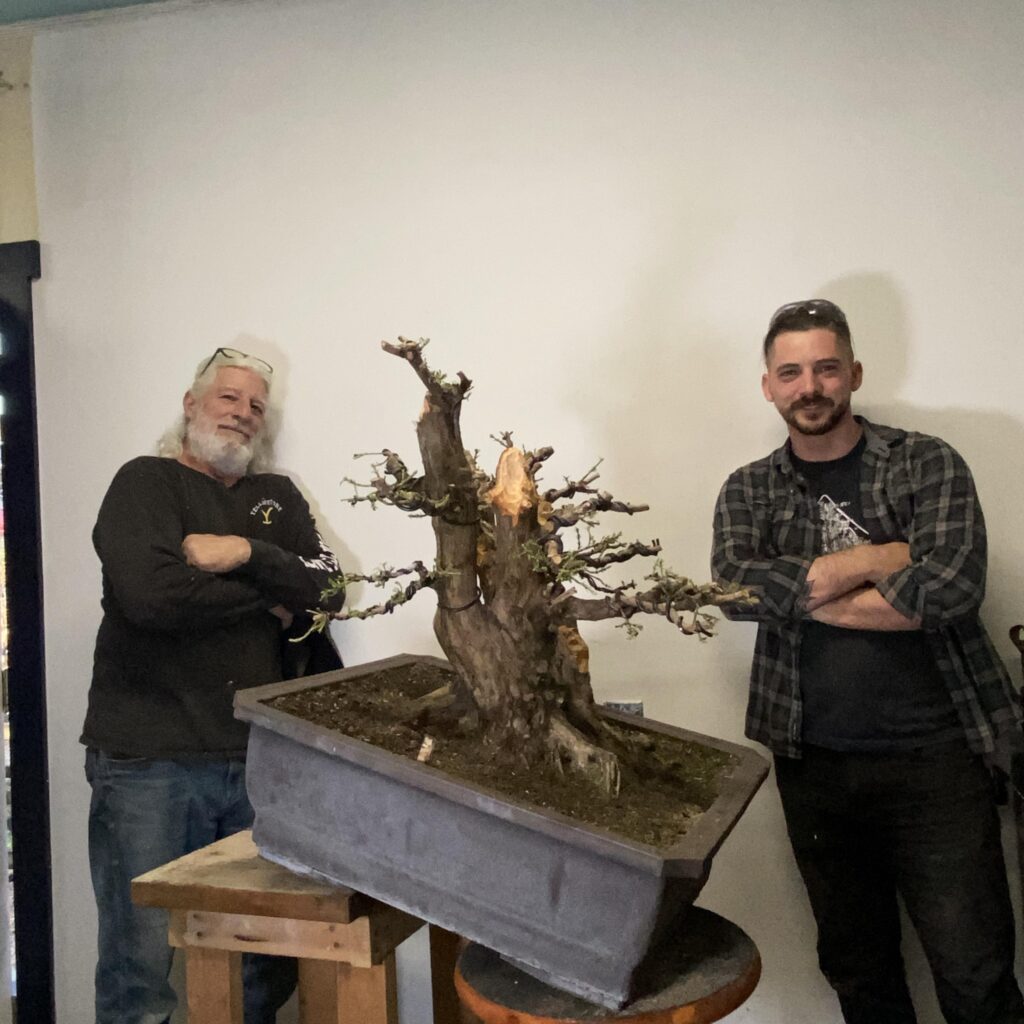
Like I said before, this was a great pleasure to collaborate with Guy on this tree. We are looking to work on several more large trees like this in the near future and I can’t wait to share the experiences with you guys.
-Evan
